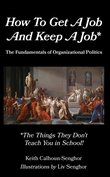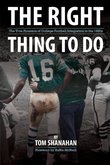
by Russell Shorto ‧ RELEASE DATE: March 4, 2025
A bracing narrative of the international standoff that birthed America’s biggest city.
Making a metropolis.
Shorto, whose The Island at the Center of the World stands as one of the seminal books about early New York, returns to the subject with a masterful account of the international struggle for control of 17th-century Manhattan, a fascinating, often overlooked saga. After taking the island from Indigenous peoples in 1626—an “injustice,” he notes, that resonates 400 years later—the Dutch built a polyglot commercial hub. Chapters on figures like Dorothea Angola, a Black landowner skilled at working the levers of local government, provide a sense of the settlement’s varied populace. The nascent city’s unforgivable “life as a slaving port” ramped up in 1659, with the arrival of a ship carrying enslaved African children. But Dutch dominion was brief, and it’s the “second taking of Manhattan” that garners most of Shorto’s attention. In 1664, English frigates appeared offshore, intent on seizing control. Unprepared for military battle, the Dutch surrendered after tense, vividly depicted negotiations. Named for England’s Duke of York, the city eventually became the “pluralistic and capitalistic” one we know today due in part to the melding of Dutch and English practices—some of which remain shocking. The Duke of York’s title, abbreviated as DY, was branded on the bodies of enslaved people, and Manhattan under English control became “a major hub of the slave trade.” Never losing sight of cultural influences still felt in the 21st century, Shorto crafts a narrative packed with intrigue and fascinating subplots, reproducing pages of decoded English military cipher and sizing up the map that might’ve been. Under one 1660s royal decree, Connecticut was briefly “a continentwide monstrosity” that included today’s New York and reached “the South Sea,” as the Pacific Ocean was then called.
A bracing narrative of the international standoff that birthed America’s biggest city.Pub Date: March 4, 2025
ISBN: 9780393881165
Page Count: 352
Publisher: Norton
Review Posted Online: Feb. 15, 2025
Kirkus Reviews Issue: March 15, 2025
Share your opinion of this book

by David Grann ‧ RELEASE DATE: April 18, 2017
Dogged original research and superb narrative skills come together in this gripping account of pitiless evil.
Awards & Accolades
Likes

90
Our Verdict

GET IT
Kirkus Reviews'
Best Books Of 2017
New York Times Bestseller
IndieBound Bestseller
National Book Award Finalist
Greed, depravity, and serial murder in 1920s Oklahoma.
During that time, enrolled members of the Osage Indian nation were among the wealthiest people per capita in the world. The rich oil fields beneath their reservation brought millions of dollars into the tribe annually, distributed to tribal members holding "headrights" that could not be bought or sold but only inherited. This vast wealth attracted the attention of unscrupulous whites who found ways to divert it to themselves by marrying Osage women or by having Osage declared legally incompetent so the whites could fleece them through the administration of their estates. For some, however, these deceptive tactics were not enough, and a plague of violent death—by shooting, poison, orchestrated automobile accident, and bombing—began to decimate the Osage in what they came to call the "Reign of Terror." Corrupt and incompetent law enforcement and judicial systems ensured that the perpetrators were never found or punished until the young J. Edgar Hoover saw cracking these cases as a means of burnishing the reputation of the newly professionalized FBI. Bestselling New Yorkerstaff writer Grann (The Devil and Sherlock Holmes: Tales of Murder, Madness, and Obsession, 2010, etc.) follows Special Agent Tom White and his assistants as they track the killers of one extended Osage family through a closed local culture of greed, bigotry, and lies in pursuit of protection for the survivors and justice for the dead. But he doesn't stop there; relying almost entirely on primary and unpublished sources, the author goes on to expose a web of conspiracy and corruption that extended far wider than even the FBI ever suspected. This page-turner surges forward with the pacing of a true-crime thriller, elevated by Grann's crisp and evocative prose and enhanced by dozens of period photographs.
Dogged original research and superb narrative skills come together in this gripping account of pitiless evil.Pub Date: April 18, 2017
ISBN: 978-0-385-53424-6
Page Count: 352
Publisher: Doubleday
Review Posted Online: Feb. 1, 2017
Kirkus Reviews Issue: Feb. 15, 2017
Share your opinion of this book
More by David Grann
BOOK REVIEW
by David Grann
BOOK REVIEW
by David Grann
BOOK REVIEW
by David Grann
More About This Book
BOOK TO SCREEN
BOOK TO SCREEN
BOOK TO SCREEN

by Elie Wiesel & translated by Marion Wiesel ‧ RELEASE DATE: Jan. 16, 2006
The author's youthfulness helps to assure the inevitable comparison with the Anne Frank diary although over and above the...
Elie Wiesel spent his early years in a small Transylvanian town as one of four children.
He was the only one of the family to survive what Francois Maurois, in his introduction, calls the "human holocaust" of the persecution of the Jews, which began with the restrictions, the singularization of the yellow star, the enclosure within the ghetto, and went on to the mass deportations to the ovens of Auschwitz and Buchenwald. There are unforgettable and horrifying scenes here in this spare and sombre memoir of this experience of the hanging of a child, of his first farewell with his father who leaves him an inheritance of a knife and a spoon, and of his last goodbye at Buchenwald his father's corpse is already cold let alone the long months of survival under unconscionable conditions.
Pub Date: Jan. 16, 2006
ISBN: 0374500010
Page Count: 120
Publisher: Hill & Wang
Review Posted Online: Oct. 7, 2011
Kirkus Reviews Issue: Jan. 15, 2006
Share your opinion of this book
More by Elie Wiesel
BOOK REVIEW
by Elie Wiesel ; edited by Alan Rosen
BOOK REVIEW
by Elie Wiesel ; illustrated by Mark Podwal
BOOK REVIEW
by Elie Wiesel ; translated by Marion Wiesel
© Copyright 2025 Kirkus Media LLC. All Rights Reserved.
Hey there, book lover.
We’re glad you found a book that interests you!
We can’t wait for you to join Kirkus!
It’s free and takes less than 10 seconds!
Already have an account? Log in.
OR
Trouble signing in? Retrieve credentials.
Welcome Back!
OR
Trouble signing in? Retrieve credentials.
Don’t fret. We’ll find you.





